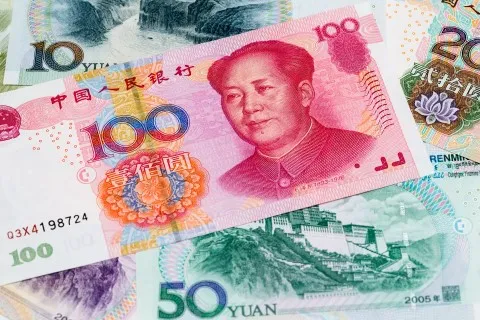
Chinese banks struggle with tighter liquidity conditions in 2018
Medium and small-sized banks are more vulnerable to these conditions.
It will be a tougher 2018 for Chinese banks with a myriad of incoming regulations and tighter liquidity conditions, Natixis Research reports.
The control on financial risks tightens as the set up of Financial Stability and Development Committee and the fine-tuning of a tougher Macro Prudential Assessment (MPA) are put in place.
Here's more from Natixis Research:
Liquidity environment will continue to be tight due to the approach to rein in excessive leverage through controlling banks’ funding venues. Deleveraging and higher counterparty risk have both pushed up funding costs. Big banks will have a better buffer due to a more stable deposit base, whilst medium and small-sized banks are more vulnerable to tightened liquidity conditions. The FED monetary policy normalisation will push up global interest rates. There is no exception for China as capital controls cannot fully insulate China from external conditions.
The solvency of Chinese banks is deteriorating due to lower profitability and regulatory pressure. The creation of organic capital is now more limited, and the Basel III capital surcharge requirements to be adopted in the future will also add to the equation. Chinese banks will have no choice but to raise capital even more aggressively. Such needs will not come at an easy time for Chinese corporates interested in tapping the bond market as bank credit growth continues to decelerate.
Whilst the worst seems to be over in terms of profitability – as net profit growth has rebounded from a low point in 2015 – the gap between asset and profit growth is still large. Because of a relatively smaller loan book, medium and small-sized banks will not benefit as much as large banks from the mild increase in lending rates expected in 2018. Besides, the growth of non-interest income has peaked as shadow banking related income is on a decline.
As for the seemingly improved asset quality, the main improvement is for a selected group of banks, namely state-owned commercial banks (SOCBs), through debt-to-equity swaps and other ways to clean up the balance sheets. This has brought down the headline figures but not all banks are the same. Asset management companies and insurers, and eventually the households, will take the baton and help sharing the risk across the financial sector.




![Lorem Ipsum [ABF 1]](https://cmg-qa.s3.ap-southeast-1.amazonaws.com/s3fs-public/styles/exclusive_featured_article/public/2025-03/a_hand_pointing_to_a_futuristic_technology_5b87c9d0e3_1.png.webp?itok=2w0y1WhS)


![Cross Domain [Manu + SBR + ABF + ABR + FMCG + HBR + ]](https://cmg-qa.s3.ap-southeast-1.amazonaws.com/s3fs-public/styles/exclusive_featured_article/public/2025-01/earth-3537401_1920_4.jpg.webp?itok=WaRpTJwE)







 Advertise
Advertise

